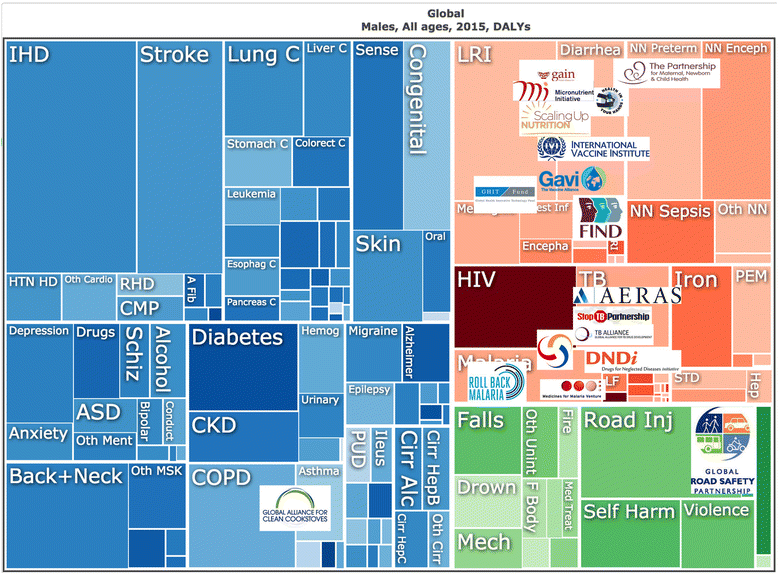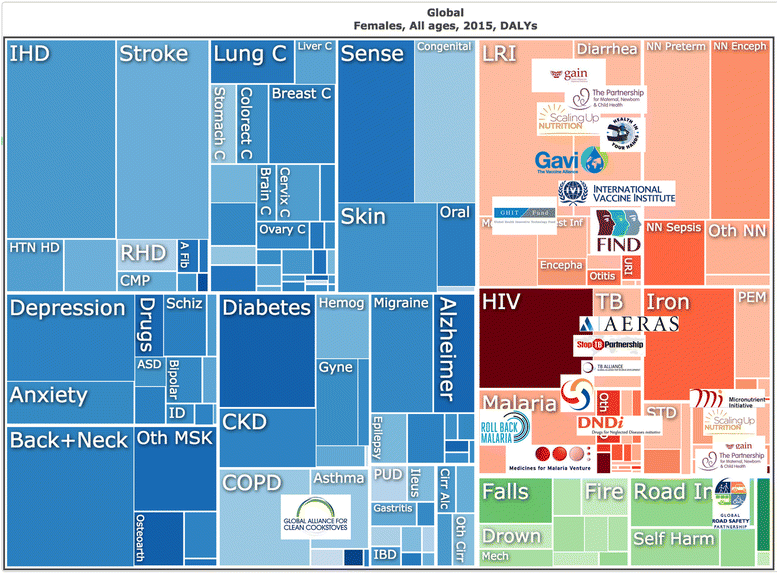Gender blind? An analysis of global public-private partnerships for health
- PMID: 28494775
- PMCID: PMC5427527
- DOI: 10.1186/s12992-017-0249-1
Gender blind? An analysis of global public-private partnerships for health
Abstract
Background: The Global Public Private Partnerships for Health (GPPPH) constitute an increasingly central part of the global health architecture and carry both financial and normative power. Gender is an important determinant of health status, influencing differences in exposure to health determinants, health behaviours, and the response of the health system. We identified 18 GPPPH - defined as global institutions with a formal governance mechanism which includes both public and private for-profit sector actors - and conducted a gender analysis of each.
Results: Gender was poorly mainstreamed through the institutional functioning of the partnerships. Half of these partnerships had no mention of gender in their overall institutional strategy and only three partnerships had a specific gender strategy. Fifteen governing bodies had more men than women - up to a ratio of 5:1. Very few partnerships reported sex-disaggregated data in their annual reports or coverage/impact results. The majority of partnerships focused their work on maternal and child health and infectious and communicable diseases - none addressed non-communicable diseases (NCDs) directly, despite the strong role that gender plays in determining risk for the major NCD burdens.
Conclusions: We propose two areas of action in response to these findings. First, GPPPH need to become serious in how they "do" gender; it needs to be mainstreamed through the regular activities, deliverables and systems of accountability. Second, the entire global health community needs to pay greater attention to tackling the major burden of NCDs, including addressing the gendered nature of risk. Given the inherent conflicts of interest in tackling the determinants of many NCDs, it is debatable whether the emergent GPPPH model will be an appropriate one for addressing NCDs.
Keywords: Gender; Global public private partnerships for health; Mainstreaming; Non-communicable diseases.
Figures
Similar articles
-
Civil society participation in global public private partnerships for health.Health Policy Plan. 2018 Oct 1;33(8):928-936. doi: 10.1093/heapol/czy070. Health Policy Plan. 2018. PMID: 30165606 Free PMC article.
-
Public-private partnerships and global health equity: prospects and challlenges.Indian J Med Ethics. 2007 Oct-Dec;4(4):176-80. doi: 10.20529/IJME.2007.070. Indian J Med Ethics. 2007. PMID: 18630239 Review.
-
Pharmaceutical industry-led partnerships focused on addressing the global burden of non-communicable diseases: a review of Access Accelerated.Public Health. 2020 Apr;181:73-79. doi: 10.1016/j.puhe.2019.12.008. Epub 2020 Jan 17. Public Health. 2020. PMID: 31958672 Review.
-
Healthy people and healthy profits? Elaborating a conceptual framework for governing the commercial determinants of non-communicable diseases and identifying options for reducing risk exposure.Global Health. 2017 Jun 15;13(1):34. doi: 10.1186/s12992-017-0255-3. Global Health. 2017. PMID: 28619031 Free PMC article.
-
Public-Private Partnerships With Unhealthy Commodity Industries: Are They Undermining Real Progress in Non-communicable Disease Prevention? Comment on "Competing Frames in Global Health Governance: An Analysis of Stakeholder Influence on the Political Declaration on Non-communicable Diseases".Int J Health Policy Manag. 2022 Jul 1;11(7):1212-1214. doi: 10.34172/ijhpm.2021.118. Epub 2021 Aug 30. Int J Health Policy Manag. 2022. PMID: 37579346 Free PMC article.
Cited by
-
Political challenges to prioritizing gender in global health organisations.J Glob Health. 2020 Jun;10(1):010702. doi: 10.7189/jogh.10.010702. J Glob Health. 2020. PMID: 32257162 Free PMC article.
-
Primum Non Discernere: Glass Ceilings and Female Representation at the European Association of Urology and European Society for Paediatric Urology Annual Meetings, 2012-2022.Eur Urol Open Sci. 2023 May 2;52:60-65. doi: 10.1016/j.euros.2023.04.010. eCollection 2023 Jun. Eur Urol Open Sci. 2023. PMID: 37284042 Free PMC article.
-
Civil society participation in global public private partnerships for health.Health Policy Plan. 2018 Oct 1;33(8):928-936. doi: 10.1093/heapol/czy070. Health Policy Plan. 2018. PMID: 30165606 Free PMC article.
-
Gendered health systems: evidence from low- and middle-income countries.Health Res Policy Syst. 2018 Jul 6;16(1):58. doi: 10.1186/s12961-018-0338-5. Health Res Policy Syst. 2018. PMID: 29980230 Free PMC article.
-
Evaluation of frameworks demonstrating the role of private sector in non-communicable disease management and control: a systematic review and thematic synthesis.BMJ Open. 2023 Mar 3;13(3):e061370. doi: 10.1136/bmjopen-2022-061370. BMJ Open. 2023. PMID: 36868600 Free PMC article.
References
-
- Bovaird T. Public-private partnerships: From contested concepts to prevalent practice. Int Rev Adm Sci. 2004;70(2):199–215. doi: 10.1177/0020852304044250. - DOI
-
- Rosenau PV. Public-private policy partnerships. Cambridge: MIT Press.; 2000.
MeSH terms
LinkOut - more resources
Full Text Sources
Other Literature Sources
Medical



